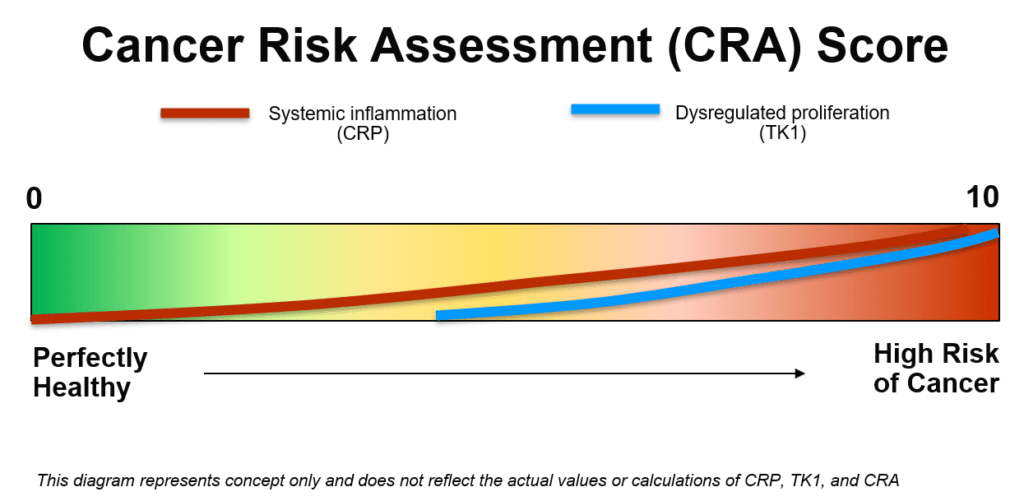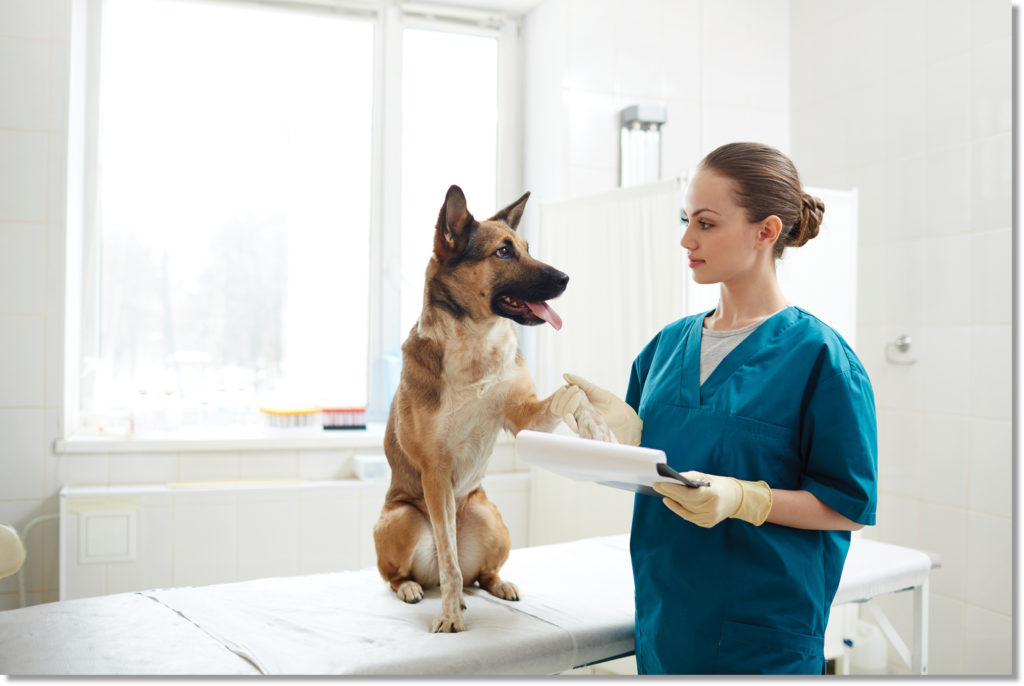
Cancer Screening
1 in 3 dogs will develop cancer. The earlier you detect it, the more options you have and the better the outcomes. VDI offers a true screening test for the apparently healthy dog or cat, Cancer Risk Assessment™, that provides the early detection you need.
CANCER RISK ASSESSMENT™
The Cancer Risk Assessment™ (CRA) is a blood test to screen apparently healthy dogs or cats for early signs of cancer and to evaluate if the dog is in a biological state that promotes the development of neoplasia. It’s a proven, effective test that was designed specifically for screening apparently normal animals for cancer. Early detection, more options, better outcomes.

How it works
The Cancer Risk Assessment uses the same biomarkers as our cancer panels: Thymidine Kinase Type 1 (TK1), a proliferation maker, and C-Reactive Protein (CRP) or Haptoglobin (HPT) which is a high-sensitivity inflammatory marker. When abnormal cell proliferation and inflammation exist, the risk of cancer is increased. [LEARN MORE]
The Cancer Risk Assessment was developed as a result of recognizing that while transient acute inflammation defends, chronic inflammation is the root cause of many illnesses and actually propagates cancer. As much as the CRA is designed to detect cancer early, it has greater value in detecting chronic inflammation which can be managed before serious diseases develop.

CRA is a unitless index from 0 to 10 where 0 is a perfectly healthy, no cancer no inflammation animal, and 10 is a perfect score for cancer. As systemic inflammation increases and abnormal cell replication appears, cancer risk increases; the lower the score, the lower the risk.
How to test
Testing the Cancer Risk Assessment is part of the annual or bi-annual workup of dogs or cats, especially those at high risk of developing cancer. The CRA score can be added to any wellness panel offered by VDI, or comes as part of the Complete Wellness Panel.
Common Panels:
- Essential Wellness + CRA
- CRP/HPT, VitD, B12, CRA
- Essential Wellness + Essential Vitamins + CRA
- CRP/HPT, VitD, B12, Folate, Mg, CRA
- Complete Wellness
- CRP/HPT, VitD, B12, Folate, Mg, Chem12, OA, CRA
Interpreting Results:
Low, Elevated, and High Risk results are not a cancer diagnostic and should not be taken as “code red”. Screening tests are designed to be sensitive not specific, so there are chances for false positives. Further discussion on understanding and using CRA can be found in the article: Cancer Risk Assessment – Understand, Implement, and Interpret.
When to recommend CRA testing:
- Apparently healthy pets during annual wellness visits
- Over the age of 5
- High Risk Breeds (e.g. Golden Retrievers, purebreds)
- Dogs with history of cancer in the line
- Concerned pet parents
How often to test:
- For best outcomes CRA should be evaluated every 4 months
- 6 months is a good compromise as 82% of cancers in the study were detected 6 months prior to clinical signs.
- Annual testing at minimum – anything beyond 6 months does not hold statistical value and is not included in the risk assessment.
What is a screening test?
The term “screen” often times get confused and interchanged with “diagnose”. Diagnostic tests, like the Cancer Panel, are designed to rule-in, that is to confirm, a disease is present in a dog that is suspected of having that disease: typically a sick dog, or one that has a mass growing. Screening on the other hand, is for the apparently healthy, clinically normal dog and is used to detect occult or early disease that hasn’t really had time to cause any visible problems. The distinction here is, screening tests are very sensitive (negative is likely a true negative), whereas diagnostic tests are specific (positive is likely a true positive).

Why does that matter?
Choosing the right type of test is very important to interpreting the results. Using a screening test on a sick dog or cat could result in false positive that leads to unnecessary/inappropriate treatments or end-of-life decisions.
Conversely, using a diagnostic test on an otherwise healthy pet could result in a false negative that doesn’t give you the proper understanding of the disease status which could be an early cancer developing or other disease. Missing that early window of detection may limit your options for management down the road.
Choosing a screening test
Many companies will tout a novel diagnostic that can be used for cancer screening. Unfortunately, not all screening tests are created the same. The general rule of thumb is to look for 3 things: Are they Proven, Effective, and Established?

PROVEN
Cancer Risk Assessment was developed from a large clinical study out of the University of Missouri with a large cohort of 360 dogs.1 This study was specifically designed to examine the use of cancer marker TK1 and inflammatory marker CRP for use as a screening tool for cancer in dogs.

EFFECTIVE
Cancer Risk Assessment is a true screening test for healthy dogs. It answers: what is the risk of a cancer event in the coming 6months? According to the study, the CRA score was able to detect 82% of cancers 6-months prior to clinical signs, and 100% of cancers 4-months prior.

ESTABLISHED
Cancer Risk Assessment, formerly known as INCaSe Health and Cancer Screen, was launched in 2013 by VDI Laboratory. It is one application of VDI’s specialty cancer test portfolio using cancer marker TK1, which has a significant body of evidence for use in canine and feline cancer diagnostics.
1. Selting, K. A., Sharp, C. R., Ringold, R. and Knouse, J. (2013), Serum thymidine kinase 1 and C-reactive protein as biomarkers for screening clinically healthy dogs for occult disease. Veterinary and Comparative Oncology. doi: 10.1111/vco.12052
